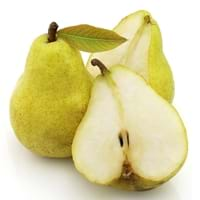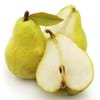Health Benefits
Arthritis prevention, Cancer prevention, Gout treatment, Heart care
Cancer prevention, Cures gastro-intestinal troubles, Reduces nervous tension, Ulcer prevention
General Benefits
Anti-inflammatory properties, Boosts immune system, Controls blood pressure, Controls blood sugar levels, Cures fever, Digestive aid, Sore throat treatment
Anti oxidant properties, Anti-inflammatory properties, Boosts immune system, Controls blood pressure, Digestive aid, Eye care, Helps in weight loss, Improves blood circulation, Maintains healthy cholesterol level
Skin Benefits
Reduces wrinkles, Treatment of acne
Anti-aging benefits, Reduces wrinkles
Hair Benefits
Promotes longer and healthier hair, Shiny hair
Regulates hair growth
Allergy Symptoms
Anaphylaxis, Digestive Problems, Itching, Skin Rashes, Swelling
NA
Side Effects
Allergic reaction
Allergic reaction
Best Time to Eat
As a snack in the late afternoon, Don't consume at night and before bed, Eat the fresh ones, avoid mixing with any other foods, don't eat after meal., Morning time (before lunch)
As a snack in the late afternoon, Don't consume at night and before bed, Eat the fresh ones, avoid mixing with any other foods, don't eat after meal., Morning time (before lunch)
Vitamin B5 (Pantothenic Acid)
Vitamin C (Ascorbic Acid)
Vitamin E (Tocopherole)
Not Available
Vitamin K (Phyllochinone)
Not Available
Lutein+Zeaxanthin
Not Available
Phytosterol
Not Available
Calories in Fresh Fruit with Peel
Calories in Fresh Fruit without Peel
Not Available
Not Available
Calories in Frozen Form
Not Available
Not Available
Calories in Dried Form
Not Available
Calories in Canned Form
Not Available
Not Available
Type
Tree fruit
Tree fruit
Season
Autumn, Summer, Winter
Winter
Varieties
Green Anjou, Red Anjou, Bartlett, Red Bartlett, Bosc, Comice, Concorde, Forelle, Seckel and Starkrimson
Meech’s Prolific, Lusitanica, Champion and Vranja AGM
Color
Yellow
Green, Yellow
Taste
Crunchy, Sweet
Tart
Origin
China, Japan
Iran, South-West Asia, Turkey
Soil Type
Clayey, Loamy, Sandy
Loam, Well-drained
Climatic Conditions
Cold, Hot, Without frosts
Warm
Facts about
- The first pear tree was planted in North America in 1620.
- The Chinese considered the pear fruit to be a symbol of immortality.
- This fruit was used as a natural remedy against nausea in ancient Greece.
- Due to its strong & fruity aroma, brides consumed quince to ensure "perfumed lips".
- It is also called as ‘Pear of Cydonia’, being native to Caucasus and Iran.
- They call it as the ‘golden apple’ of Greek Mythology.
Top Producer
China
Turkey
Other Countries
Argentina, Belgium, India, Italy, Japan, South Africa, Spain, Turkey, United States of America
Algeria, Argentina, Azerbaijan, China, Iran, Morocco, Serbia, Spain, Uzbekistan
Top Importer
Europe
United States of America
Top Exporter
China
Argentina
Botanical Name
Pyrus communis
Cydonia oblonga
Synonym
Not Available
C. vulgaris
Subkingdom
Tracheobionta
Tracheobionta
Division
Magnoliophyta
Magnoliophyta
Class
Magnoliopsida
Magnoliopsida
Species
P. communis
C. oblonga
Difference Between Pear and Quince
We might think that Pear and Quince are similar with respect to nutritional value and health benefits. But the nutrient content of both fruits is different. Pear and Quince Facts such as their taste, shape, color, and size are also distinct. The difference between Pear and Quince is explained here.
The amount of calories in 100 gm of fresh Pear and Quince with peel is 57.00 kcal and 57.00 kcal and the amount of calories without peel is Not Available and Not Available respectively. Thus, Pear and Quince belong to Low Calorie Fruits and Low Calorie Fruits category.These fruits might or might not differ with respect to their scientific classification. The order of Pear and Quince is Rosales and Rosales respectively. Pear belongs to Rosaceae family and Quince belongs to Rosaceae family. Pear belongs to Pyrus genus of P. communis species and Quince belongs to Cydonia genus of C. oblonga species. Beings plants, both fruits belong to Plantae Kingdom.









